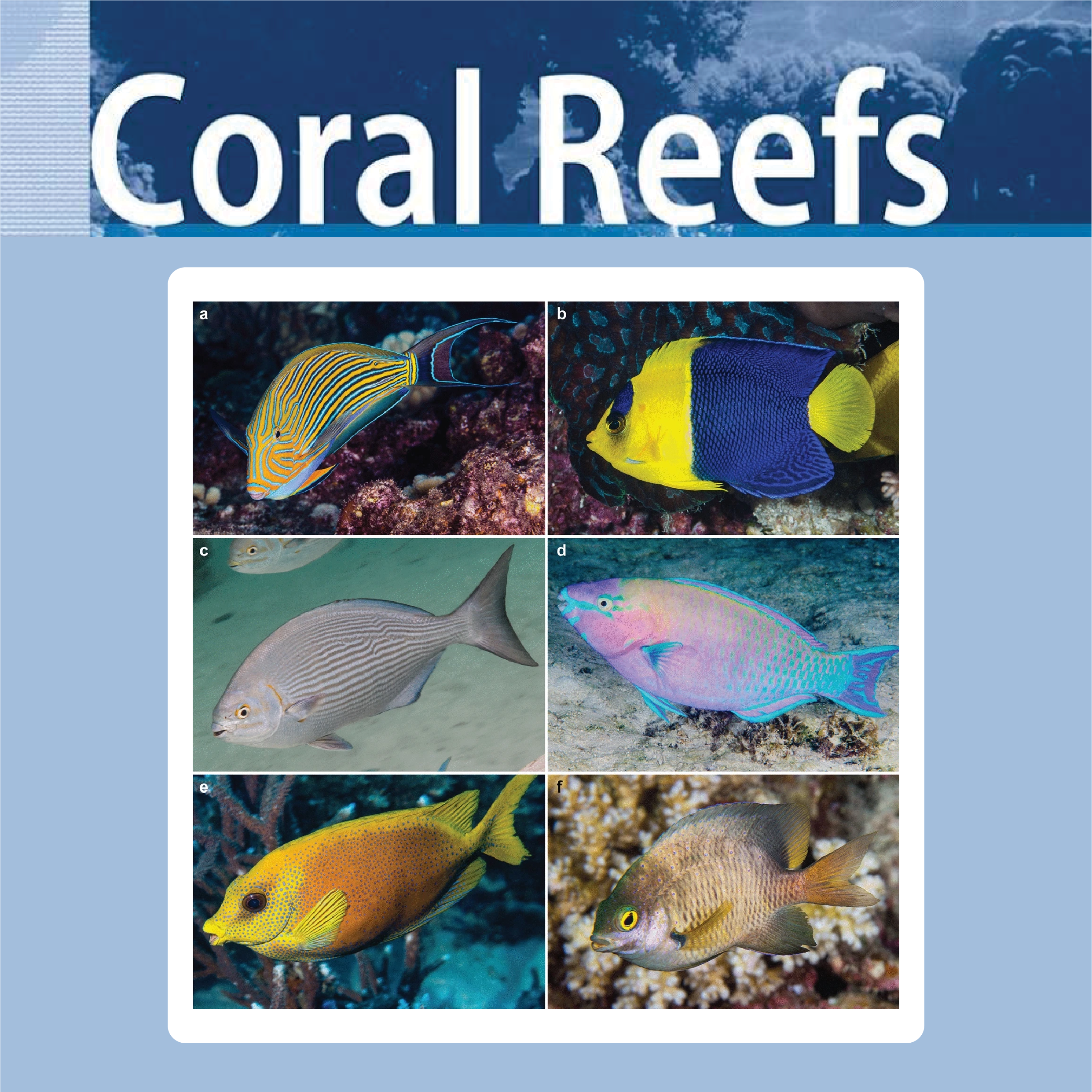A functional perspective on the meaning of the term ‘herbivore’: patterns versus processes in coral reef fishes
Sterling Tebbett, Scott Bennett & David Bellwood
Abstract:
Herbivorous fishes are a key functional group in coral reef ecosystems and have been the focus of a vast body of research. While substantial progress has been made in research, challenges persist, especially in respect to quantifying patterns versus processes. Despite this challenge being recognised over 40 years ago. To help clarify such challenges, and work towards solutions, in this perspective we explore how the definition of ‘herbivorous reef fishes’ precludes an easy translation between patterns of herbivore abundance and the process of herbivory. Indeed, if herbivorous fishes are defined as, a fish in which the diet is predominantly based on plant material, then this encompasses a diverse suite of fishes which all remove primary producers to varying extents and have markedly different impacts on reef functioning. Given this situation, we explore how our approaches to directly quantifying herbivory on reefs have progressed. We highlight how lessons learnt from macroalgal assays could be applied to the direct quantification of herbivory from algal turfs in the epilithic algal matrix (EAM); a community of primary producers that are invariably difficult to work with and quantify. Nevertheless, given the abundance of turfs on coral reefs, and their relative importance in herbivore dynamics, widespread process-based assessment of EAM herbivory represents an avenue for expanding future research. Recognising the difficulty of translating patterns in herbivore abundance to the process of herbivory, and an enhanced focus on EAM herbivory, will be necessary to comprehensively quantify the process of herbivory on Anthropocene coral reefs.

